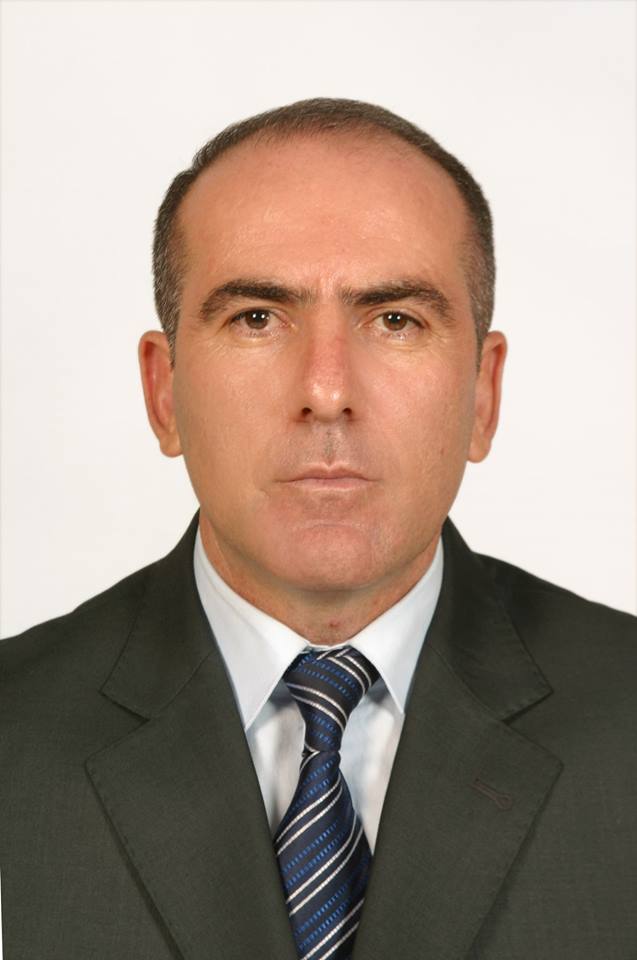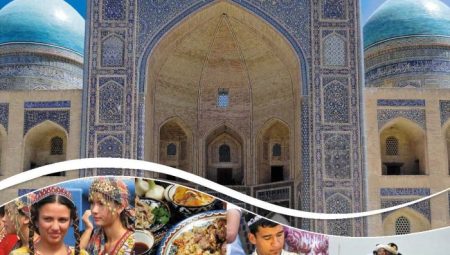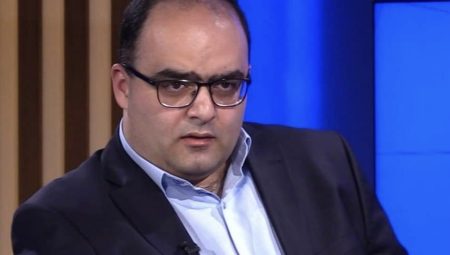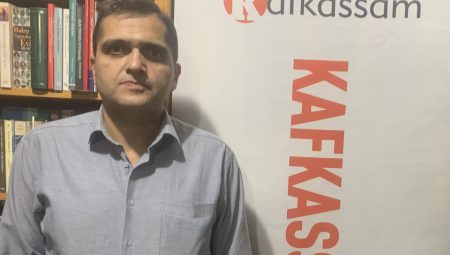Among human rights violations, genocide is considered the most brutal and inhumane. Genocide is the deliberate destruction of a group because of its religious, political and ethnic diversity. The biggest difference between this crime and other crimes against humanity is that it is aimed at the complete annihilation of any ethnic group. It is no coincidence that the English version of the word “genocide” is a combination of the Greek word “genos” meaning “race, nation” and “cide” meaning “killing” in Latin. When we look back into history, we see that different peoples have been subjected to persecution, massacres and genocides at different times. One of the most horrific genocides in the history of mankind was the Khojaly genocide committed by Armenians against Azerbaijanis. Although the Karabakh problem has been on the agenda since 1988, it is a historical issue that has its roots in the Russian Revolution of 1905.At the heart of the problem is the territorial claims of the Armenians over Karabakh, the land of ancient Azerbaijan, settled here by the Russians.Due to these allegations, Azerbaijani Turks have repeatedly been subjected to Armenian vandalism. There is a great need for a systematic study of Armenia’s territorial claims and military aggression against Azerbaijan in the second half of the 1980s, as well as its policy of ethnic cleansing and genocide against Azerbaijanis. This problem has been studied by scientists and specialists so far, and a number of different scientific works and monographs have been written.
The Azerbaijani people, who were subjected to genocide by Armenians in different periods of history, faced another such tragedy in February 1992 in Khojaly. The Khojaly genocide, one of the most tragic pages of our recent history, has been forever engraved in the blood memory of our people. Unfortunately, the city of Khojaly went down in history as the Khojaly tragedy. With its unprecedented brutality, cruelty and murder facts, and its own scale and methods, this tragedy revealed the character of Armenians in the world and in the face of history with its all clarity. Yes, the Khojaly tragedy is a symbol of murder and cruelty in the world.
In general, the Khojaly genocide against the Azerbaijani people is an act of savagery in human history with its unimaginable cruelty and inhumane methods of torture. This genocide is also a historic crime against all mankind.
The massacres committed by Armenians in Karabakh, Zangazur and Shusha after Baku in 1905-1906 continued successively, with the First Baku Massacre on February 6, 1905, the Nakhchivan Massacre on May 5, 1905, Ravan massacre on May 23, 1905, Ajmiadzin massacre on June 3, 1905, Jabrayil massacre on June 13, 1905, Shusha massacres on July 12, 1905 and August 16, 1905, Second Baku massacre on August 20, 1905, September 26, 1905 The Javanshir massacre continued with the Ganja massacre on November 18, 1905, the Tbilissi massacre on November 24, 1905, the Gazakh massacre on January 22, 1906, and the Zangazur massacre on July 29, 1906. According to the Armenian historian S. Zavaryan, during these massacres, a total of 75 Turkish-Muslim villages were burned and destroyed, including 12 in Shusha, 15 in Javanshir, 5 in Jabrayil and 43 in Zangazur. In 1906, more than 200 villages and settlements were looted in Yerevan, Ganja and other regions, and their inhabitants were killed. In Karabakh alone, 158 Turkish villages were destroyed and thousands of Turks were killed. Not content with all these massacres, the Armenians committed another horrible genocide a few years later, the March 31 genocide, which revealed their vandal identities.
“Armenians killed all Muslims without mercy, without mentioning children or infants.The streets of Baku were almost filled with naked women’s bodies and severed heads. …the bodies of the children were thrown to the dogs”
In this massacre, in which people were nailed to the walls, the dismembered bodies of 57 women were found in just one place. Elsewhere, a room was found where the removed eyes, severed ears and noses were collected.
According to the “Bakinksiy Rabochiy” newspaper, more than 17,000 people were killed in Baku in three days.
Along with Baku, bloody massacres were committed in other areas as well. Dozens of Turkish villages were burned, destroyed and hundreds looted in Zangazur, Goychay, Karabakh, Ganja, Gyumri and Uchkilsa districts. In addition, the atrocities committed in Baku were repeated in Shamakhi, Salyan, Kurdamir, Guba and Lankaran.
There are also a number of local sources related to the massacres committed by Armenians against Azerbaijani Turks. However, the main issue is the recognition of these horrible crimes by Armenian sources. According to Armenian and Russian sources, five hundred thousand Azerbaijani Turks were subjected to genocide in Armenia between 1918 and 1920.
Since the beginning of the 20th century, Armenians, who wanted to annex Nagorno-Karabakh, claiming that it belonged to them, were concerned about the growing number of Turks in the area. Since 1987, Armenian attacks on the area have intensified. The aim of the attacks was to expel the Azerbaijani Turks from the region.
In all the places occupied by the Armenians, both civilian Armenians and soldiers committed provocations, looting and crimes against the Turks. The support of the Soviet government and its silence in the face of their crimes gave the Armenians the courage to continue their inhumane actions without hesitation. From August and September 1990, their crimes against Azerbaijani Turks became direct and borderless.
The night of February 25-26, 1992 entered the history of the Azerbaijani people as the Khojaly tragedy. In violation of all international law, the Armenian armed forces committed an act of genocide against Azerbaijanis by attacking the sleeping city with the participation of personnel of the 366th motorized infantry regiment of the former Soviet army stationed in Khankendi. The city of Khojaly, as a strategically important territory in the Nagorno-Karabakh region of Azerbaijan, was hindering the Armenian occupation plans. Because Khojaly was located 10 km south-east of Khankendi, between Aghdam-Shusha and Askeran-Khankendi roads. One of the reasons for the growing importance of the city was the location of the only airport of Nagorno-Karabakh in Khojaly. Therefore, the main goal of the Armenian armed forces was to control the Askeran-Khankendi road passing through Khojaly and to seize the airport in Khojaly.
At such a time, the geographical and strategic position of Khojaly was very important for the Armenian armed forces. Thus, Khojaly had a strategic position on the roads of Agdam, Shusha, Askeran. The location of the only airport in Karabakh here, as well as the passage of the railway through it, increased the strategic importance of the city. The road connecting Karabakh with Armenia also passed through Khojaly. The settlement of Turks in such an important region was literally unacceptable for Armenia.
Khojaly was also a city that welcomed Azerbaijanis who were forcibly expelled from Armenia, a historical Turkic land, as a result of the policy of genocide and deportation pursued by Armenians against Azerbaijani Turks at various times. In the late 1980s, when Armenians started land claims, negative attitudes and pressure on Azerbaijani families living in Khankendi resulted in their forced eviction from the city. Thus, the families expelled from Khankendi also began to live in Khojaly.
Khojaly has been under blockade since October 1991.. Khojaly has been under blockade since October 1991. On October 30, communication with the city by land was cut off, leaving the helicopter as the only means of transport. The last helicopter left for Khojaly on January 28, 1992. The only transport connection with the city was cut off after a civilian helicopter was shot down over Shusha, killing 40 people.
Electricity supply to the city has been suspended since January 2. Since the second half of February, Khojaly has been under siege by Armenian armed forces, attacked daily with artillery and machine guns.
According to the information of that time, an armed group of about 515 people, 3 “Alazan” missiles, 10 armored vehicles, 3 infantry armored vehicles and several tanks were placedin the Armenian-populated villages such as Dashcheshme, Mehdikend, Ballyja, Hasanabat, Piramaki, Noraguh and Mirzajan, which surround Khojaly on four sides.
Khojaly resident Nabiyev Niftali Ibad oglu said about the situation in Khojaly at that time: “As Khojaly was fired upon by Armenians with various weapons, the locals were always in fear. Due to the closure of the road, no transportation was carried out in the last 3-4 months. As a result, Khojaly was completely enslaved”.
On the night of February 25-26, 1992, Armenian armed forces bombing Khojaly, with the support of the 366th Motorized Infantry Regiment of the former Soviet Union, laid siege to the city from three sides. The city came under heavy fire from helicopters and heavy armored vehicles on February 25 at around 10 p.m. After two hours of firing from Alazan-type anti-aircraft guns, troops entered the city with tanks and artillery. During the attack, soldiers of the 366th Regiment moved from the direction of Khankendi, Russian-Armenian armed forces in the rear and more than a thousand armed bandits from the direction of Askeran.
Khojaly’s defense against the attack was very limited. The city’s defense consisted mainly of local defense army equipped with hunting weapons, police and soldiers of the national armed forces. In addition, the Khojaly people, concerned about the massacres of Turks in Karabakh, set up a local defense unit of 150 people on 15 November 1991. But this union also had limited capabilities and light weapons. The reason for this was the decision of the Soviet leader Mikhail Gorbachev on July 25, 1990 to collect all weapons, including hunting weapons in the hands of the civilian population in Karabakh, as in all regions of Azerbaijan. Thus, both the local population and the formed local defense unit did not have enough weapons. In such circumstances, it was almost impossible to defend Khojaly from any attack.
The remaining 2,500 Azerbaijanis in the besieged city had to leave the city, hoping to reach the center of Aghdam, a neighboring region inhabited by Azerbaijanis. However, most people did not achieve this goal. Because the Armenian armed forces and the soldiers of the motorized regiment, who destroyed the city, followed the people who were trying to escape to save their lives and killed them mercilessly. The main goals of the Armenian armed forces were to destroy the Khojaly region, to evacuate the Askeran-Khankendi road passing through this area and to seize the airport.
As the attack on Khojaly was from three directions, the people had to flee in the direction of Askeran. But later it turned out to be a trap.Near the village of Nakhchivanik, the unarmed people were cut off by Armenians and shelled.
Ramin Hasanov, who was only 10 years old at the time of the attack on Khojaly, describes what happened on that terrible night: “On the night of February 25-26, 1992, at around 11 o’clock, the Armenian and Russian armed forces besieged Khojaly. I was sleeping in clothes at that time. My mother said that Armenians attacked. We ran with the crowd to the basements of concrete houses and stayed there for several hours. Someone shouted that the city was on fire. Armenians were destroying the city. We left the basement and ran to the river. Looking back, we saw that Armenians were shooting unarmed people. We crossed the river and took refuge in the forests and mountains”.
Unarmed people trying to escape were either killed or taken captive by Armenians. Most of the people weakened in the snowy valleys and forests were brutally killed by Armenian militants in the Askeran-Nakhchivanik plain. Armenian militants tortured the people they killed, peeled off their scalps, cut off body parts, pulled out the eyes of babies, tore the bellies of pregnant women, buried or burned the men alive. On February 28, a group of people, including members of the national press, were flown by helicopter to the town of Khojaly, where the tragedy took place. Terrified by what they saw, journalists said there were bodies everywhere.
The scene that emerged after that horror in Khojaly on February 26, 1992 was also described by foreign media representatives. “New York Times” reporter Thomas Golz said: “What we saw in Khojaly was absolutely terrible. It was as if I was in hell. There were human corpses everywhere. I do not believe that people can do such a thing. Most of the bodies were in terrible condition. There was a body I saw that is still in front of my eyes. A pregnant woman’s abdomen was torn and her baby was removed”.
Another journalist, who witnessed the shocking scene, described the events in Khojaly in the following words: “Through pictures and videos, I announced to the whole world that 1,300 Azerbaijani Turks were killed by Armenian gangs in one day. The Khojaly massacre was an inexplicable atrocity.The then leadership and Ayaz Mutallibov tried to hide the incident from the public for four days. All of Azerbaijan was shocked by what happened. Many of those who managed to escape the Armenian knives and bullets – women, children and the elderly had their feet frozen when they managed to cross the snowy mountains and reach Agdam. Some had their legs amputated due to gangrene. It was as if the Armenians had committed all kinds of atrocities in order to intimidate. … The dead bodies were lined up in a 12-kilometer forest between Khojaly and Agdam”.
That night, the Armenians tortured the Azerbaijani Turks, which is difficult to describe and imagine, and committed one of the most horrible crimes in the history of mankind.
According to official statistics, 613 Azerbaijani Turks, including 63 children, 106 women and 70 elderly people, were brutally killed during the Khojaly genocide. 56 of them were burnt alive, more than 1,000 people, including 76 children, were disabled as a result of severe injuries. 8 families were completely destroyed, 25 children lost both parents, and 130 children lost one of their parents. 1275 people were tortured and taken prisoner by Armenians. According to some witnesses, the death toll has exceeded 1,300.
Armenians also ignored the Geneva Convention with their atrocities. Nevertheless, the developed Western powers and the world powers ignored the massacre and no sanctions were imposed on the forces that carried out the massacre.
The events in Khojaly are recognized as “genocide” by Mexico, Hungary, Pakistan, Colombia, the Czech Republic, Bosnia and Herzegovina, Honduras, Peru, Sudan and the Organization of Islamic Cooperation.
Bringing the Khojaly genocide, one of the most horrific genocides in the history of mankind, to the world and its recognition by more countries has always been one of the priority issues for the Republic of Azerbaijan. Work and campaigns in this direction are still ongoing.
Armenian vandalism, reflected in various pages of history, has manifested itself in recent history too. Thus, during the 44-day war, which began on September 27, 2020 and resulted in the liberation of our ancient land of Karabakh, the Armenians once again revealed their terrorist identities by targeting the civilian population. In fact, this was not surprising for the people of Azerbaijan, who witnessed the killing of civilians and children even during the ceasefire, in other words, were aware of the nature of the enemy.
According to official data, during the 44-day war, 94 civilians were killed, 414 were injured, 512 civilian objects, 3410 houses and 120 apartment buildings were damaged by the Armenian army’s shelling of civilian settlements. Today, the souls of all our martyrs who died for Karabakh, all the civilians who fell victim to the Armenian atrocities, including the residents of Khojaly, are happy. Because our Karabakh has already been liberated from the enemy’s footsteps and occupation.
After that, the main task of every Azerbaijani is to convey to the world all the examples of Armenian savagery, including the historical realities, the Khojaly genocide, the terror of Barda and Ganja, and to pass this information on to future generations. Undoubtedly, the children of the land of fire, distinguished by their patriotism, courage and devotion to the national ideology, will be able to cope with this moral task.
The true nature of this terrible genocide, which took place in front of the eyes of the whole world, was revealed only after national leader Heydar Aliyev returned to political power in 1993. In February 1994, the National Assembly of the Republic of Azerbaijan gave a political and legal assessment to the Khojaly genocide.
In his address to the people of Azerbaijan on the occasion of the 10th anniversary of the Khojaly genocide on February 25, 2002, national leader Heydar Aliyev outlined the historical and political essence of this brutal massacre: “The Khojaly tragedy is a continuation and the bloodiest page of the policy of ethnic cleansing and genocide carried out by Armenian chauvinist-nationalists against Azerbaijanis for almost 200 years”.
At present, exposing the perpetrators of this genocide and informing the international community has been identified as one of the main directions of Azerbaijan’s foreign policy. As a result of the successful foreign policy of President of the Republic of Azerbaijan Ilham Aliyev, documents adopted by a number of international organizations have already indicated Armenia as an aggressor state. Steps have been taken to convey the truth about Khojaly to the world, to spread it in the international arena, as well as to give an objective assessment to this genocide.
The exhibition of photos and children’s drawings “Victims of Aggression” organized in Brussels on February 26, 2007 at the initiative of the Heydar Aliyev Foundation is a continuation of the work to convey these truths to the international community. In order to convey the truth about the genocide to the world community, the Foundation held commemorative ceremonies on February 19-26 of the same year in Istanbul and 25 other provinces of Turkey as part of the “Khojaly Week” program of events. In addition, the scientific conference “Khojaly genocide and the realities of 1915” held in Berlin on February 14, 2008 was extremely important in promoting the Khojaly tragedy in the international arena. With the support of the Heydar Aliyev Foundation, the anniversary of the Khojaly tragedy was celebrated in 2010 in more than 100 places around the world. A series of events dedicated to the genocide are carried out on the basis of propaganda materials prepared by the foundation. At present, commemorative events organized by the Heydar Aliyev Foundation on a large scale in different countries and aimed at spreading the truth of the tragedy is successfully continued within the framework of the Youth Forum for Cooperation and Dialogue (OIC GF) of the Organization of the Islamic Conference (now called the Organization of Islamic Cooperation) by Representation in the Russian Federation headed by Leyla Aliyeva.
The Khojaly tragedy is an international crime that stands in line with the world genocides and reveals the essence of Armenian terrorism as a whole. Much work must be done to convey this fact to the world and to future generations who are the destiny of Azerbaijan. The world must accept the Khojaly genocide along with such tragedies as Khatin and Nagasaki.
Armenian terrorism and genocide committed against our people must be studied and passed on to future generations. In fact, like a number of important issues related to our destiny, we are too late to bring to the attention of the whole world the acts of genocide committed against us for centuries, to pass these tragedies on to future generations, to introduce them our friends and enemies, to dispel Armenian myths.
But a lot has been done in this direction in recent years. National leader Heydar Aliyev signed a decree “On the genocide of Azerbaijanis” in 1998, bringing the crimes committed against the Azerbaijani people for centuries to the center of public and political thought.
As stated in this decree, “an ideological basis for slander and military aggression against the morale, national pride and self-esteem of the Azerbaijani people has been prepared, historical facts have been distorted and public opinion has been confused because the policy of genocide against our people has not found its political and legal value. The falsified Armenian history was raised to the level of state policy in order to create a basis for the growth of young Armenians in a chauvinistic spirit. Our new generation, brought up in the spirit of Azerbaijani literature and culture, which serves great humanist ideals, has been persecuted by extremist Armenian ideology.
Undoubtedly, the best way to prevent all this is to put aside unnecessary and harmful humility, to convey everything to our people, as well as to the whole world.
The truth about the Khojaly genocide, which is part of the policy of ethnic cleansing pursued by Armenian chauvinist circles against Azerbaijanis in the XIX-XX centuries, must be conveyed to the world community and foreign parliaments and this extremely serious war crime against the Azerbaijani people and humanity in general must receive its legal and political assessment at the international level.
We believe that this day is not far away. As a result of the policy pursued by the Azerbaijani state under the leadership of President Ilham Aliyev, our territories were liberated from occupation, and the murderers received their deserved punishment.
The Patriotic War, which began on September 27 under the leadership of Supreme Commander-in-Chief Ilham Aliyev, ended in a glorious victory. During the 44-day military operations, the Azerbaijani Army achieved a great victory, destroying the armed forces established by Armenia for 30 years. Every day of these 44 days is our glorious history.
President of the Republic of Azerbaijan, Supreme Commander-in-Chief Mr. İlham Aliyev: “Azerbaijan has restored justice, international law, stopped the occupation, the expression “Nagorno-Karabakh conflict” no longer exist”. Under the leadership of President Ilham Aliyev, in 44 days, Azerbaijan has achieved a victory that became legendary.
Months and years will pass, this war will not be forgotten. Books and textbooks will be written, and every Azerbaijani who took part in this war will be remembered as a hero. The next glorious page of the great military-political history of Azerbaijan has been written. A historic mission has been completed and the Karabakh problem has been resolved within the territorial integrity of our country in accordance with the requirements of international law. We are grateful to our victorious Supreme Commander-in-Chief, the brave Azerbaijani Army, and our brave sons who gave their lives for the Motherland!
Azerbaijan has once again proved that its unity is unshakable and eternal, both on the front lines and in the information war.
Dr. Murteza HASANOĞLU





